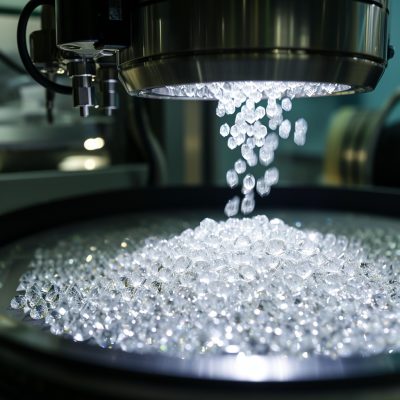In recent years, lab-grown diamonds have surged in popularity, appealing to a diverse range of consumers due to their ethical considerations, environmental impact, and cost-effectiveness. As the market matures, a question increasingly posed by owners is: can you resell a lab-grown diamond? This question is not only about the capacity to sell but also encompasses a multitude of factors, including market demand, value retention, and the potential emotional attachment that often accompanies such purchases.
Before diving into the resellability of lab-grown diamonds, understanding their intrinsic value relative to natural diamonds becomes paramount. Lab-grown diamonds, created in controlled environments that simulate the Earth’s geological conditions, share the same physical, chemical, and optical properties as their mined counterparts. However, they are typically priced lower, making them an economically attractive option for consumers. Their relatively lower price point can affect resale value, a critical consideration for potential sellers.
One of the most significant aspects impacting the resale of lab-grown diamonds is consumer perception. While acceptance is growing, some buyers still view lab-grown stones as lesser alternatives to natural diamonds. This perception can result in a lukewarm market for lab-grown diamonds in resale scenarios. Nevertheless, the rising awareness regarding sustainable and ethical purchasing is beginning to shift this narrative. Enthusiasts of lab-grown jewels often prioritize sustainable practices, meaning resale value may hinge more on consumer education and market evolution than on traditional aesthetic qualities.
When contemplating the resale of a lab-grown diamond, it is essential to assess several factors. First and foremost, the diamond’s quality and certification play a crucial role in determining its resale potential. Lab-grown diamonds, like their natural counterparts, come with grading reports from reputable gemological laboratories. Certificates from organizations such as the Gemological Institute of America (GIA) or the International Gemological Institute (IGI) can significantly bolster the resale value, as they provide an unbiased assessment of the diamond’s cut, clarity, color, and carat weight. The transparency offered through these certifications can assure potential buyers of the diamond’s quality, making it easier to find a fair market price.
Additionally, the demand for lab-grown diamonds in the resale market varies across different geographical regions. In cities where ethical consumption is a driving force amongst jewelry purchasers, lab-grown diamonds may fetch higher resale values than in other areas where traditional mined diamonds are still predominantly favored. Consequently, sellers might find greater success in urban locales known for progressive views on sustainability.
A significant factor to consider is the platform used for reselling the diamond. Options for reselling can include online marketplaces, jewelry consignment shops, or even direct sales to friends and family. Online platforms may offer broader access to potential buyers, while consignment shops provide a more personal touch. Each platform entails unique advantages and challenges. For instance, online marketplaces may charge fees or commissions, while consignment stores may take a longer period to sell and may dictate final pricing. Sellers must weigh these factors against their urgency to sell and desired selling price.
Another dimension to consider is emotional attachment. Many individuals purchase diamonds for momentous occasions—engagements, anniversaries, or other celebrations—imbuing the piece with sentimental value. This attachment may complicate an objective assessment of the jewel’s market value. Sellers should evaluate whether they are prepared to part with the emotional implications tied to their diamond, as readiness to sell may also significantly influence their ability to negotiate a reasonable price.
With the evolving landscape of lab-grown diamonds, prospective sellers should remain attuned to market trends. Industry reports and consumer insights can offer valuable information about the current appetite for lab-grown diamonds. Awareness of timeframes—how long it might take to sell, the price fluctuations, and seasonal demand cycles—can help sellers make informed decisions. For example, certain times of the year, such as the holiday season, may attract more buyers, leading to higher prices.
Moreover, understanding the competitor landscape is crucial. Sellers should conduct comparative analyses of similar diamonds and their asking prices. This exercise can help sellers set realistic pricing strategies, ensuring their listings are competitive yet profitable. Pricing a lab-grown diamond too high might deter buyers, while undervaluing it can lead to regrettable losses.
Ultimately, while lab-grown diamonds are resellable, the process encompasses various challenges and considerations. The key to a successful resale lies in being informed about market conditions, understanding consumers’ perceptions, leveraging the diamond’s certification, and evaluating the best sales avenues. As this industry continues to progress, shapes of ownership and sales strategies will likely evolve alongside consumer behavior.
In conclusion, the question of whether one can resell a lab-grown diamond invites more profound exploration than a simple yes or no. Factors such as market dynamics, emotional attachments, and evolving cultural perceptions play significant roles in determining the feasibility and success of reselling these enchanting gems. Continual shifts in the jewelry landscape imply that keeping abreast of trends and market sentiments will remain essential for those contemplating the resale of lab-grown diamonds.
